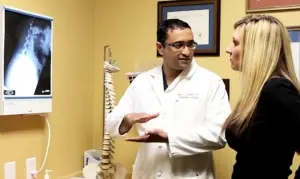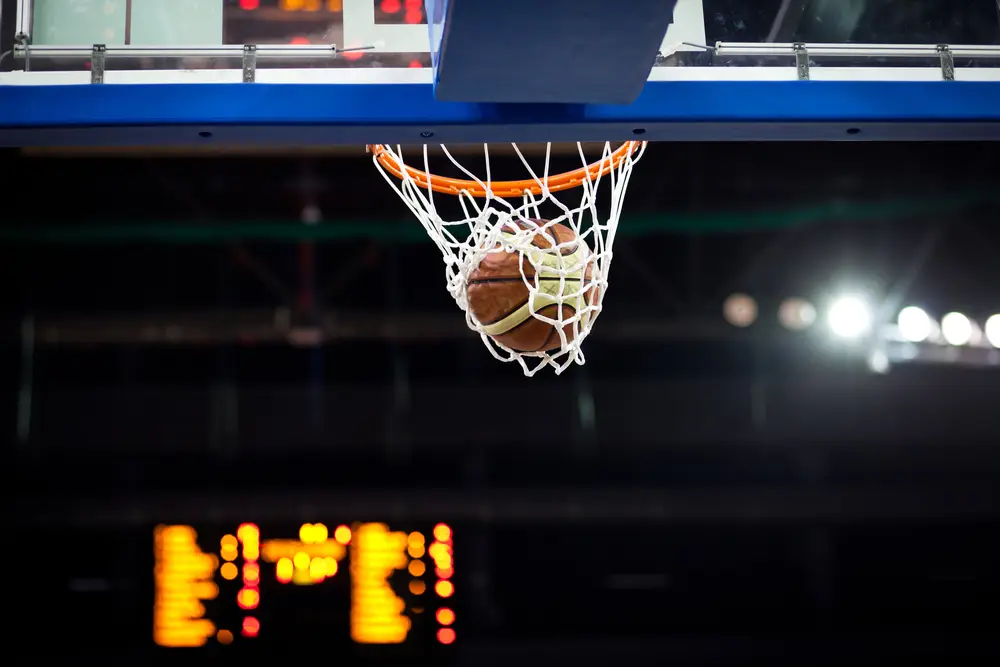
Maybe you’ve noticed friends and work colleagues casually tossing around terms they don’t normally use – college basketball terms. Even in medical environments such as ours at Texas Back Institute, where the usual discussions center on back pain, artificial disc replacement and spinal injuries, the water-cooler talk has included references to March Madness, the Big Dance, Cinderella teams, first seeds, brackets and, of course, the Final Four.
Even for casual basketball fans, these terms are much more than mere sports jargon. They are the currency of what’s become the most popular sporting event in the United States – The National Collegiate Athletic Association (NCAA) Men’s and Women’s Basketball Championships. During the latter part of March and the first week of April people who wouldn’t know a jump shot from a jumper cable get caught up in this single-elimination (lose one and you’re done!) college basketball tournament.
All this March Madness started back in 1939 with the first NCAA tournament and it has grown to include 68 teams in the 2013 tournament. The 31 Division I teams get automatic invitations to the Big Dance by winning their conference championship and the other 37 teams are chosen by a conference selection committee. The decisions of this selection committee are always fraught with controversy, typically instigated by teams that don’t receive an invitation to the tournament.
President Obama Joins the Madness
The tournament has gotten so popular that even the leader of the free world and avid basketball fan – President Barack Obama – has weighed in with his picks for the eventual Final Four teams in the tournament. The Associated Press notes that President is “picking Florida, Indiana, Louisville and Ohio State to reach the Final Four round, in the Men’s Division I which will be played in Atlanta in April.”
President Obama filled out an NCAA tournament bracket for ESPN for the fifth straight year. On the women’s side, he selected Baylor, California, UConn and Notre Dame to advance to the Women’s Division finals to be held this year in New Orleans.
Those fans who get involved in the tournament by filling out the brackets – predicting winners in each game and the eventual Final Four teams – are always on the lookout for insights about the strengths and weaknesses of every team. These otherwise sane individuals become obsessed (making the term March Madness all the more appropriate) with trying to find ANY angle to pick the eventual winners of the NCAA tournament. These fans might be tempted to follow the picks of the POTUS, assuming that his basketball intelligence is exemplary.
However, the little-used basketball term – caveat emptor- might be appropriate. In 2012, President Obama’s men’s bracket ranked 2,347,421 out of 6.45 million entries, placing him in the 63.6th percentile. Not bad, but not great.
These are the Best Athletes in the World
Part of the fascination with the NCAA tournament comes from the fact that these players are considered some of the best athletes in the world. They have the ability to jump several feet in the air to execute slam dunks. They have astounding eye-to-hand coordination allowing them to toss a basketball into a small net from great distances on the court. They have aerobic capacity that allows them to aggressively run, start and stop over several hours of a game. And they are still college students, which means that they are 18 to 24 or so years old and are still growing in size and strength.
When asked how these athletes accomplish all of these physical feats and constant pounding with little injury, Dr. Rajesh Arakal, a trauma surgeon with Texas Back Institute notes that this is possible because of the superior conditioning of these world class athletes, specifically the development of the muscles that support the back. Dr. Arakal, who is also on the staff of the Michael Johnson Performance Center and the Ben Hogan Sports Medicine clinic said, “The posterior muscles of these basketball players are extremely well developed and they give great support to the spine. I have seen MRI’s of the muscle columns on the front and side of these athletes and they are like steel columns!”
Non-athletes don’t have this type of muscle development to support their spine and Arakal notes this can present problems that result in severe back pain, spinal misalignment, herniated discs and other back injuries when they overexert. While there is no data collected on the injuries of people who might have been basketball players in college or high school but don’t get regular strength training in their current lifestyle, and after watching a few March Madness games decide to challenge some high school kids to a pickup game, these “weekend warriors” often end up on Dr. Arakal’s examination table at Texas Back Institute.
What are the Most Common Injuries of Casual Athletes?
Anyone who has ever played organized sports in high school or college has probably been involved in this type of scenario. After watching the Super Bowl, World Series or NCAA basketball tournament, it is very tempting to grab a ball and start playing the games we’ve been watching. We asked Dr. Arakal what the most common injury results from this situation.
“The most common injury that results from a person who is not used to playing a sport is a damaged Achilles tendon. Men and women who attempt to go full-speed without conditioning and warming up, are very likely to sprain or otherwise damage this tendon.”
What about back injuries to someone who is not accustomed to the stress of full-speed athletic activity? Dr. Arakal says, “People who try and go full-speed in a pickup basketball game, without stretching or physical conditioning can get disc bulges which are very painful. Typically, after a strenuous game, the player’s back stiffens because one of the discs is bulging. Our initial treatment involves using anti-inflammatory medication and prescribing rest.”
How does someone who is not in great condition avoid these types of injuries? Dr. Arakal suggests, “Stretch all of the back and leg muscles thoroughly, especially as you get older. Plus, it is extremely important to warm-up the muscles that will be used in the sport. Ultimately, the best way to avoid these ‘weekend warrior’ injuries is to establish a muscle development regimen before hitting the court. Just as with the basketball players who are involved in the NCAA tournament, a casual athlete must build up that muscle strength before extreme exertion of a game.”
Which Team Wins it All?
As noted earlier, anyone looking for more inside information to successfully fill out those brackets is open to all opinions and theories. It was therefore irresistible to get Dr. Arakal thoughts on the team he thinks will win it all.
“I spent some time in Washington and I like Gonzaga this year. They’ve always been one of the Cinderella teams and this year they have one of the best teams they’ve ever had. They might actually make a run and win it.”
There you have it. Texas Back Institute surgeon and sports medicine expert Rajesh Arakal likes Gonzaga going to the Final Four. For the sake of the Bulldogs, let’s hope he’s right.
Under any circumstances, after watching the March Madness games, warm up and stretch before getting out on the court and pretending that you’re 16 again. Otherwise, you might be seeing Dr. Arakal on a more professional basis!


